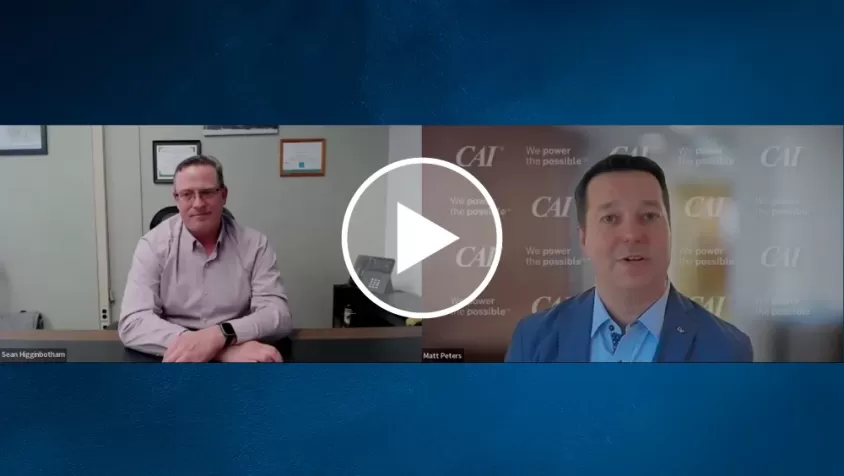Setting the stage for hybrid project management
Hybrid project methodology is a popular approach to project management that combines the meticulous planning of traditional methods with the flexibility of modern, agile practices. It's like hosting a well-planned party where you have a detailed itinerary but still leave room for spontaneous karaoke sessions.
Blending the traditional waterfall methodology's structured approach with the agile approach's adaptability can be tricky. For some projects, it is ultimately rewarding and more successful than sticking to one or the other. As Fleetwood Mac would say, "You can go your own way" by blending the best of both worlds.
Building harmonies with a hybrid project management methodology
Hybrid methodologies can be great for large projects that require formal structure, such as prior funding approval, capital, or annual planning processes. Projects requiring specific permitting processes before starting the initiative could apply the linear, sequential waterfall methodology at the beginning to ensure all items are secured in the order they need to be.
Once all regimented processes are complete, you can apply an iterative approach to execution. Imagine planning a rock concert where you must secure the venue, obtain permits, and finalize the lineup before starting rehearsals and promotional activities. As Starship sang, "We built this city" on a foundation of adaptability. Leveraging traditional methodologies while leaving room for flexibility can help see large projects to completion more effectively and with fewer disruptions.
However, the hybrid approach can come with challenges before it sees the light of success. Combining the structure of the waterfall methodology with the fluidity of agile practices can be confusing, and teams may need extra training to transition from a rigid, task-driven model to a more flexible approach. Stakeholders who are used to different methodologies might find themselves at odds with the flexibility the agile model provides.
To mitigate these challenges, teams can start with workshops and training sessions to learn agile principles, like teaching guests the latest dance moves before the big party. Beginning with a small pilot project to practice shifting between methodologies can drive acceptance and understanding of the combined approach, allowing for a fluid transition to the more significant initiatives. Gradually introducing agile practices, such as daily stand-up meetings, helps everyone adjust without panic. Encouraging cross-functional collaboration fosters shared responsibility, and regular feedback loops facilitate continuous learning, akin to checking in on guests during a party.
Equipping teams with tools like Jira ensures they have what they need to communicate clearly. Detailed documentation and transparency are necessary to ensure all parties understand how communication streams will work for all aspects, from task assignment to stand-up meeting standards, issues reporting and resolution, and everything in between. Regularly revisiting and aligning the project's objectives with the organization's strategic goals will keep the ship steady. Toto would advise, "Hold the line," and stay true to your vision. This will help keep everyone on track despite new hybrid methodologies.
A symphony of adaptation in hybrid project management
Let's shift focus to government agencies and their utilization of the hybrid project management methodology. Government agencies must navigate regulations, stakeholder expectations, and public scrutiny. These institutions are known for their intricate workings and diverse demands. The hybrid model finds a fitting home within the complexity of navigating political pressures, budget constraints, and regulatory needs. It's like planning a grand event where guests' preferences are considered, yet the evening retains spontaneity.
Government projects often involve many stakeholders, each with unique interests. The hybrid model allows agencies to craft a detailed plan that satisfies all parties, while remaining flexible enough to adapt to changes. Agencies can use the waterfall methodology's structured approach to work through budget planning and funding cycles. Once approved to start, they can decide what approach fits their project and government reporting requirements the best.
Some agencies with strict reporting and phase gate requirements will opt for continuing waterfall through the initiation and planning stages. They will transition to the agile approach through the development cycles in the execution phase. Allowing the development team to break the work into smaller phases enables the agency to show incremental progress toward completion and report to their funding authority that tangible progress is occurring. The display of forward progression provides assurance that the investment was worthwhile for the government entity distributing the funds.
For the teams executing the work, the shift to agile during execution allows for continual value delivery, flexibility, and continuous improvement. They can collaborate with their stakeholders in real-time and make changes on the fly using agile workflows. This shows the best of both worlds and the central values of incorporating small phases, consistent collaboration, and continuous improvement cycles. The hybrid methodology provides the structure necessary to ensure accountability and transparency, which is essential in the public sector. Just as a well-organized event requires a master of ceremonies to maintain order, government projects benefit from clear guidelines and oversight.
Whether implementing new technology or constructing vital infrastructure, government agencies must be ready to adjust their strategies as circumstances evolve. Like a seasoned host, the hybrid model allows this adaptability while maintaining the overall plan's integrity. Changes are inevitable but manageable with the right approach.
Encore of success: Understanding the benefits of hybrid project management
As we conclude, remember that hybrid project management can lead to successful and impactful ventures when executed with care and adaptability. Be vigilant of potential pitfalls, measure your success, and employ strategies to maintain harmony. Embrace the hybrid model's flexibility and structure, and you'll find yourself navigating the complexities of hybrid project management with confidence and finesse.
Whether planning the next Woodstock or developing groundbreaking technology, the hybrid approach offers a balanced path to achieving your goals. So, keep the rhythm steady, stay true to your vision, and let the symphony of success play on. As Queen would cheer, "Don't stop me now," as the journey is only beginning.
Unlock seamless project success with CAI project management office (PMO) services. CAI's seasoned experts bring precision, innovation, and a proven track record to every project, ensuring timely delivery and budget adherence. CAI PMO enhances efficiency, mitigates risks, and drives strategic alignment with your business goals.
If you’re interested in learning more, fill out the form below.



